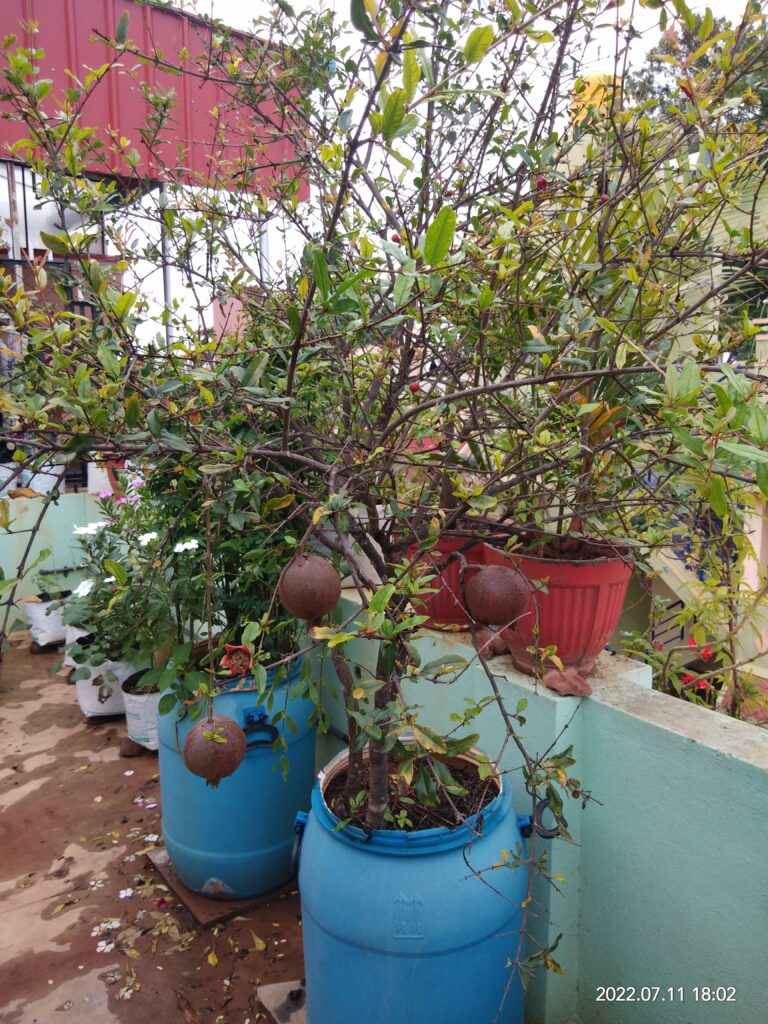
Pomegranate is a fruit-bearing shrub or small tree that belongs to the family Lythraceae. The scientific name of pomegranate is Punica granatum. The fruit of the pomegranate is a rounded, hexagonal, or globular shape and typically measures between 2 to 5 inches in diameter. The outer layer of the fruit is a thick, leathery, and dark red or purple skin. Inside, the fruit is divided into compartments or cells, each containing a seed surrounded by a juicy, sweet, and tart aril.
Pomegranate is considered a superfood due to its high content of antioxidants, vitamins, and minerals. The arils are rich in vitamins C and K, fiber, and folate. They also contain punicalagins, which are unique compounds that have been shown to have powerful antioxidant and anti-inflammatory effects.
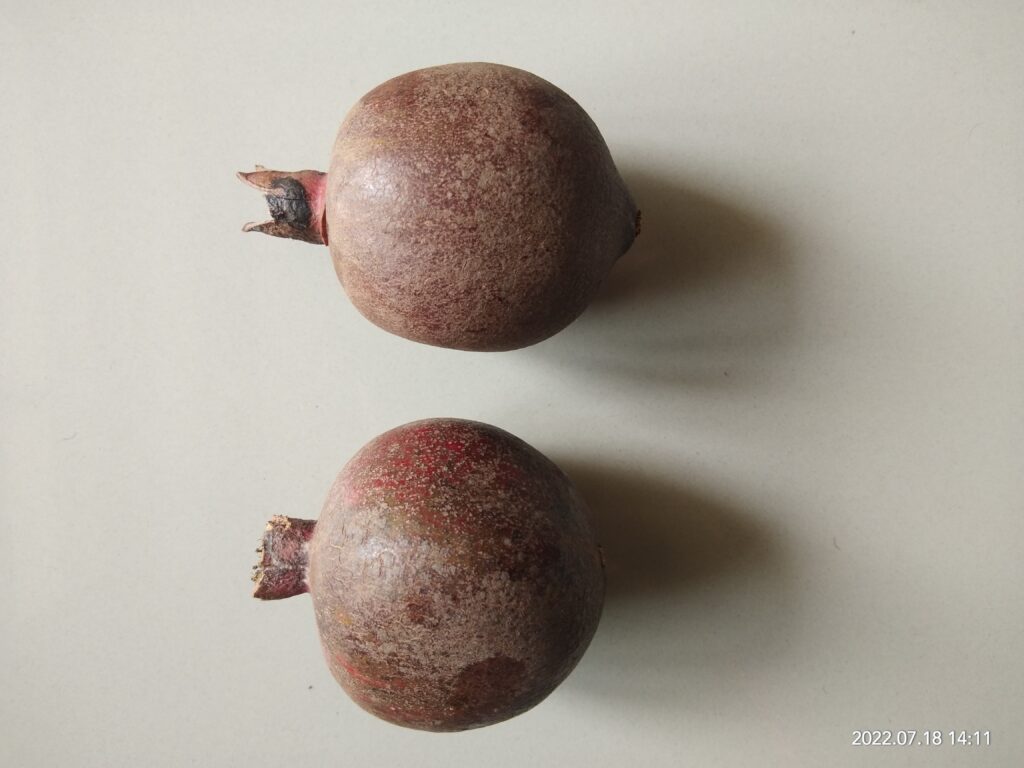
Pomegranate is used in a variety of culinary preparations, including juices, salads, and sauces. The arils can be eaten raw or cooked, and the juice can be used as a flavorful and nutritious addition to smoothies and cocktails. In traditional medicine, pomegranate has been used to treat various ailments, including high blood pressure, inflammation, and digestive issues.
Pomegranate is also a symbol of fertility and abundance in many cultures and is often used in religious and cultural ceremonies. The fruit is native to the Middle East but is now grown in many parts of the world, including the United States, Spain, and India. It is typically in season from September through February in the northern hemisphere
How to grow pomegranates?
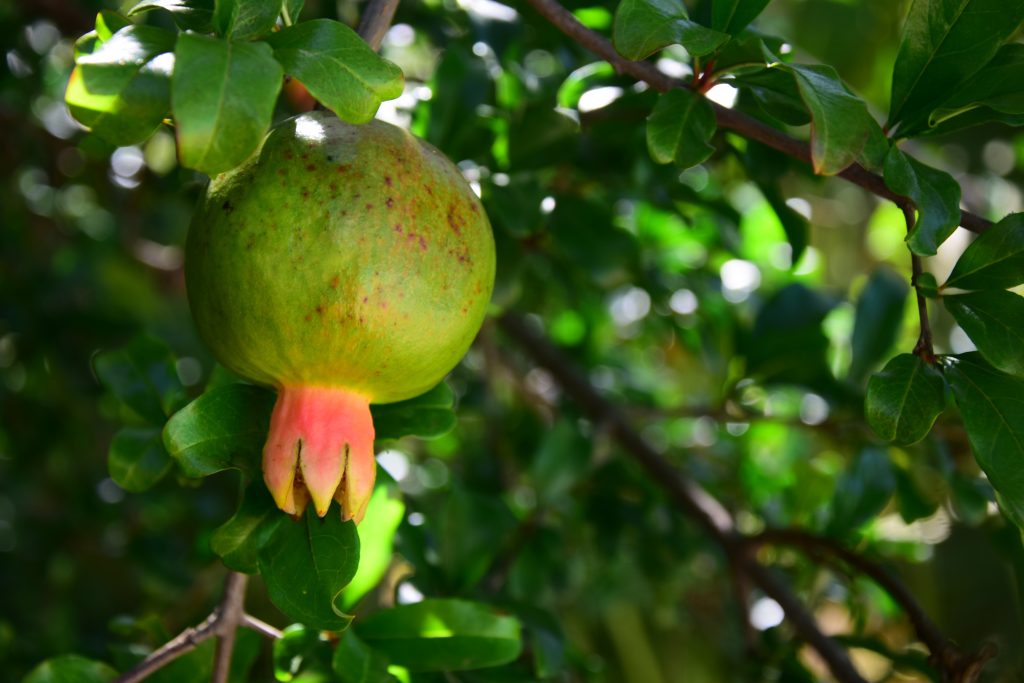
- Choose a location with plenty of sunlight. Pomegranates need at least 6-8 hours of direct sunlight daily.
- Prepare the soil by adding compost and organic matter to improve soil fertility and drainage. Pomegranates prefer well-draining soil that is slightly acidic (pH 5.5-7.0).
- Plant the pomegranate tree in the prepared soil. Pomegranates can be grown from seeds or from young trees purchased from a nursery.
- Water the soil thoroughly after planting to settle the roots in the soil. Water regularly to keep the soil moist but not waterlogged.
- Fertilize the pomegranate tree with a balanced fertilizer every 2-3 months during the growing season.
- Prune the pomegranate tree in the winter to remove dead or diseased wood and to shape the tree.
- Pomegranate trees may need to be staked or supported in their first few years of growth to help them establish a strong root system.
- Wait 3-5 years for the tree to mature and produce fruit. Pomegranate fruit typically ripens in the late fall.
- Harvest the pomegranates when they are fully ripe. The fruit should be heavy, brightly colored, and have a hard skin. Cut the fruit from the tree with pruning shears.
With these steps, you can grow your own pomegranate tree and enjoy fresh, healthy fruit from your home garden.
What are the benefits of pomegranate?

Pomegranate is a fruit that has been used for thousands of years for its medicinal properties. Here are some of the potential benefits of consuming pomegranate:
- Rich in antioxidants: Pomegranates are a rich source of antioxidants, which help to protect the body against damage from free radicals.
- Anti-inflammatory properties: Pomegranates contain anti-inflammatory compounds that can help to reduce inflammation in the body, which can be beneficial for those with inflammatory conditions like arthritis.
- May help lower blood pressure: Studies suggest that drinking pomegranate juice or taking pomegranate extract may help to lower blood pressure.
- Potential anti-cancer properties: Some studies have suggested that pomegranates may have anti-cancer properties, although more research is needed in this area.
- May improve heart health: Pomegranates may help to improve heart health by reducing cholesterol levels and preventing the buildup of plaque in the arteries.
- May improve memory: Pomegranates may have neuroprotective properties that can help to improve memory and prevent cognitive decline.
- May have antibacterial and antiviral properties: Some studies suggest that pomegranate extract may have antibacterial and antiviral properties, which could be beneficial for fighting infections.
Overall, consuming pomegranate or pomegranate extract may have several health benefits, although more research is needed to fully understand its potential benefits and mechanisms of action.
How to peel a Pomegranate?
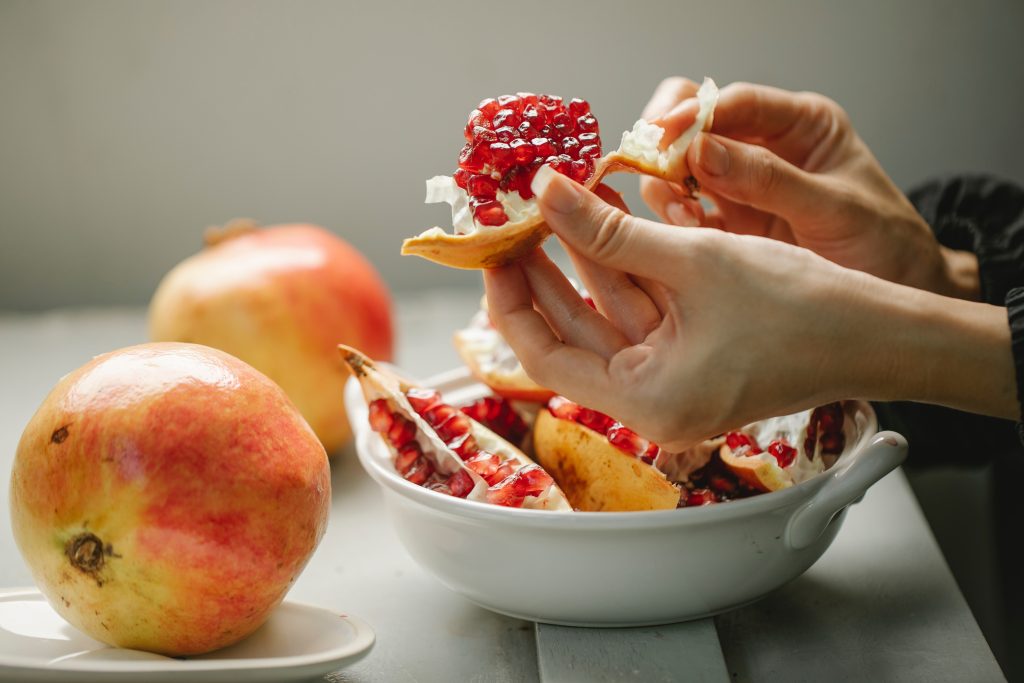
Eating a pomegranate can be a little messy, but it’s worth it for the juicy, sweet, and tangy seeds inside. Here are some steps to follow for how to peel a pomegranate:
- Cut off the crown: Use a sharp knife to slice off the crown or the top of the pomegranate. You will see the white pith inside.
- Score the skin: Use the knife to make shallow cuts along the ridges of the pomegranate. Be careful not to cut too deep or you will damage the seeds inside.
- Submerge the fruit in water: Fill a large bowl with water and place the pomegranate inside. Soak it for about 5 minutes. This will make it easier to separate the seeds from the pith.
- Break the fruit apart: Use your hands to break the pomegranate apart along the score marks. You should be able to see the seeds inside.
- Remove the seeds: Gently separate the seeds from the pith and the membrane. The seeds will sink to the bottom of the bowl while the pith and membrane will float to the top. You can skim them off with a spoon.
- Eat the seeds: Once you have removed all the seeds, you can eat them right away or store them in an airtight container in the refrigerator for a few days. You can sprinkle them on top of salads, yogurt, or oatmeal, or eat them as a snack on their own.
Enjoy your delicious and nutritious pomegranate seeds!
How much Pomegranate can we eat a day?
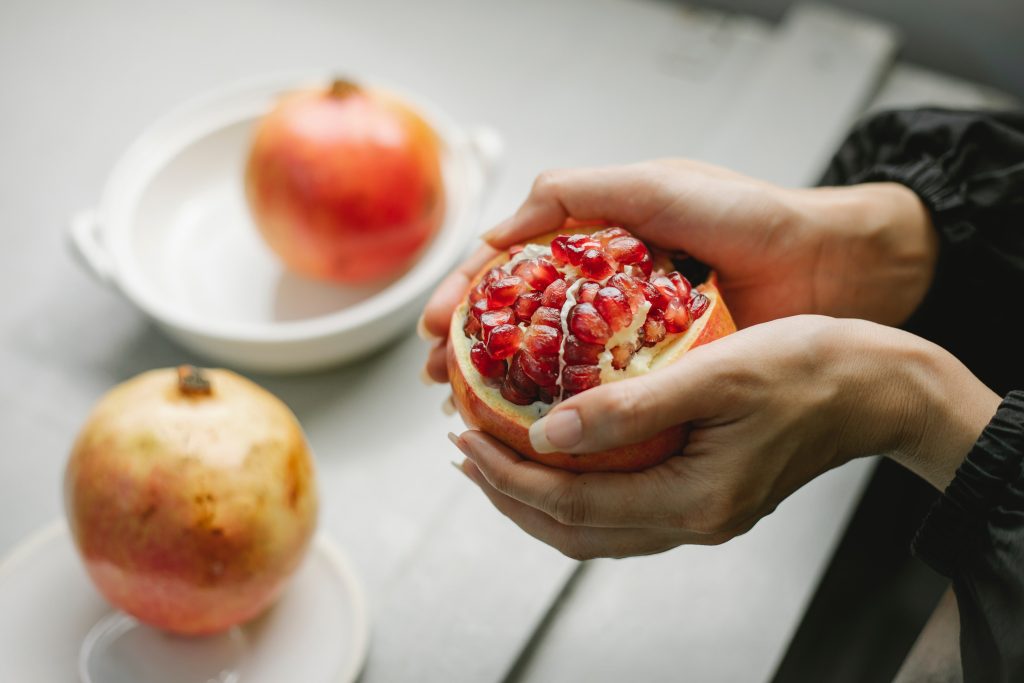
Pomegranate is a healthy fruit that is high in antioxidants, fiber, and vitamin C. Eating pomegranate can have many health benefits, such as improving heart health, reducing inflammation, and preventing certain types of cancer.
However, there is no specific recommended daily intake of pomegranate. It is generally safe for most people to consume pomegranate in moderate amounts as part of a healthy, balanced diet. Eating a whole pomegranate or drinking a glass of pomegranate juice once a day is likely safe and may provide health benefits.
It’s worth noting that some people may be allergic to pomegranate or experience digestive issues such as diarrhea, bloating, or stomach pain after consuming it. If you experience any adverse reactions, it’s best to stop consuming pomegranate and consult with a healthcare professional.
What are the easy ways to add pomegranate to your diet?

Pomegranate is a versatile fruit that can be added to many dishes to boost their nutritional value and add a pop of flavor. Here are some easy ways to add pomegranate to your diet:
- Sprinkle pomegranate seeds on salads: Pomegranate seeds add a sweet and tangy crunch to salads. Sprinkle them on top of a green salad or mix them with roasted vegetables for a colorful and flavorful side dish.
- Use pomegranate juice as a marinade: Pomegranate juice is a great ingredient for marinades for meat or tofu. Mix it with olive oil, garlic, and herbs for a flavorful marinade that will tenderize and flavor your protein.
- Blend pomegranate into smoothies: Pomegranate juice or seeds can be blended into smoothies for an antioxidant-rich boost. Try blending it with spinach, banana, and almond milk for a delicious and nutritious smoothie.
- Make pomegranate salsa: Pomegranate seeds can be mixed with diced tomatoes, onions, jalapenos, and cilantro to make a sweet and spicy salsa that pairs well with grilled fish or chicken.
- Add pomegranate seeds to oatmeal or yogurt: Top your morning bowl of oatmeal or yogurt with a sprinkle of pomegranate seeds for a sweet and crunchy addition.
By incorporating pomegranate into your diet, you can enjoy its many health benefits while adding delicious and nutritious flavor to your meals.
